A New Chapter for Video: From Promise to Reality
By August 2025, talking about AI-generated video no longer sounds like science fiction. Tools like Veo 3 (Google) and Sora (OpenAI) are redefining what we mean by audiovisual production: you type a text prompt and get a video with a quality that seemed impossible just a few years ago.
For agencies, brands, and production companies, this isn’t just a technological leap—it’s a cultural and creative shift that changes how we think, produce, and distribute content.
From the editing room to the keyboard: the new workflow
Previously, producing a video involved coordinating filming crews, editing, post-production, equipment rentals, locations... Today, AI allows you to prototype an idea in minutes.
- Want to test a campaign concept? Create a video in Sora.
- Need to show a client a more realistic storyboard? Use Veo 3 to bring that script to life.
- Looking to reduce pre-production costs? You can do so without spending money on sets or actors to validate ideas.
This doesn't replace traditional production, but it does speed it up and make it more strategic: less trial and error, more focus on what really matters.
Creative Agencies: From Threat to Opportunity
For agencies, AI in video may sound like a threat (“what if clients just generate everything themselves?”). But the reality is different: creativity, not the tool, is the true differentiator.
The gap between a mediocre output and a memorable one lies in how you use AI to tell a story. It’s not the same to prompt “a dog on the beach” as it is to craft a prompt with narrative, brand tone, and user experience in mind. That’s where creative teams remain irreplaceable.
In Argentina and across Latin America, agencies are already adopting these models into their workflows—not as replacements, but as allies to prototype, iterate, and convince clients faster.
Brands: More Content, Less Friction
Digital marketing demands a massive amount of visual assets: TikTok campaigns, Instagram reels, YouTube videos, programmatic ads… And this is where AI video generation shines: it lowers barriers and multiplies speed.
Brands can now:
- Test multiple versions of a spot before investing in a full shoot.
- Adapt a single concept for different markets with minimal changes in context and style.
- Optimize budgets without sacrificing visual quality.
AI won’t replace premium productions, but it unlocks a new volume of creative output, perfect for competing in an attention economy where you only have seconds to engage.
Production Companies: From Fear to Reinvention
Production houses may feel the most tension from this shift—but they also stand to gain the most. How?
- Using AI to create pre-visualizations that win clients over.
- Speeding up pitch processes with materials closer to the final product.
- Experimenting with hybrid formats: AI + real footage, instead of one or the other.
In an increasingly competitive audiovisual market, the key advantage won’t be having the technology, but knowing how to integrate it with human talent.
The Human Factor Remains the Differentiator
At the end of the day, technology democratizes—but creativity differentiates. You can have the best tool in the world, but if you don’t know what story to tell, the result will be flat.
Agencies, brands, and production companies that understand this won’t just survive this wave of change—they’ll lead it. Because the real value lies in connecting with audiences, evoking emotions, and building memorable brands. And that’s something no AI can do alone.
A Disruption in Disguise: Opportunity Ahead
The arrival of Veo 3 and Sora signals the beginning of an era where video production feels more like writing than filming. And that opens up an entirely new world of possibilities for those of us who work with visual content. The question that remains is simple—and powerful: 👉 If creating a video is easier than ever, what will you do to make yours truly unforgettable?
